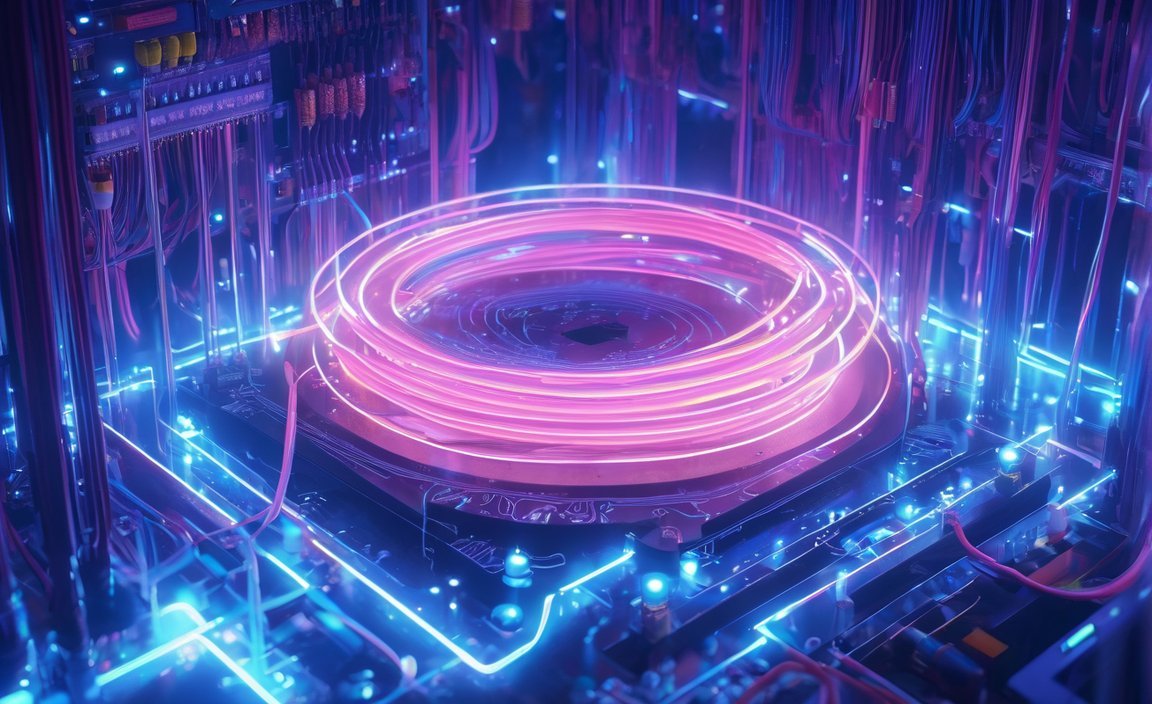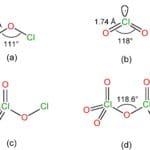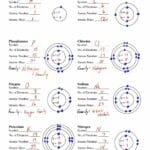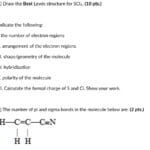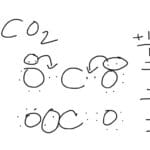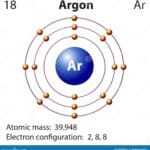Welcome to the electrifying world of electricity! In this article, we will delve into the fascinating realm of electrical power and uncover 10 fun facts that will surely spark your curiosity. From the shocking truths about lightning to the mysterious forces behind static electricity, prepare to be amazed as we explore the wonders of this essential aspect of our everyday lives. So let’s begin our journey and discover the electrifying fun in our article titled “Discover Electrifying Fun: 10 Fascinating Facts About Electricity.”
Key Takeaways:
- Reports about the discovery of electricity have been exaggerated.
- Electricity is the movement of electrons.
- Lightning showcases electricity at its extremes.
- Plants can spark during thunderstorms.
- The brain has the ability to power a light bulb.
- The ‘hum’ of electricity varies around the world.
- Electricity consumption is steadily increasing.
- Bees possess electric properties.
- Platypus bills are covered in 40,000 electroreceptors.
- Ancient civilizations used electric fish for medical procedures.
- The brain communicates through electrical signals.
- Electroconvulsive therapy (ECT) has a long history of use.
- The 19th century was a pivotal time for electricity.
- Ancient Egyptians had electric lamps.
- Electronic cabs were the earliest functional electric vehicles.
10 Fun Facts About Electricity

Electricity is a mysterious force that powers our world in more ways than we can imagine. From the movement of electrons to the spark of lightning, electricity has fascinated humanity for centuries. In this article, we’ll explore ten fascinating facts about electricity that will leave you electrified with knowledge.
Fact 1: Reports about the discovery of electricity have been greatly exaggerated.
Throughout history, there have been numerous tales surrounding the discovery of electricity. From Benjamin Franklin’s famous kite experiment to Nikola Tesla’s groundbreaking inventions, the truth is sometimes embellished. In reality, the concept of electricity has been known since ancient times, and it took the collective efforts of many brilliant minds to unravel its mysteries.
Fact 2: Electricity is the movement of electrons.
At its core, electricity is the movement of tiny particles called electrons. These charged particles flow through conductors like wires, creating the currents that power our homes, devices, and industries. It’s this flow of electrons that brings life to our modern world.
Fact 3: Lightning is electricity at its extremes.
Few natural phenomena can match the power and beauty of lightning. In an instant, millions of volts of electricity discharge through the atmosphere, creating a dazzling display of light and sound. This immense release of electrical energy can heat the surrounding air to temperatures hotter than the surface of the sun.
Fact 4: When thunder roars, plants can spark.
Believe it or not, thunderstorms can sometimes ignite plants. The rapid buildup of electrical charge within a storm can cause a phenomenon called “atmospheric electricity.” This can result in sparks jumping from the ground to nearby plants, causing them to catch fire. Nature never ceases to amaze us!
Fact 5: The brain has the ability to power a light bulb.
While it may sound like science fiction, the human brain produces enough electrical energy to power a small light bulb. Neurons, the cells in our brains, communicate through tiny electrical signals. When billions of these signals work together, they create the astounding complexity of our thoughts, emotions, and actions.
Fact 6: The ‘hum’ of electricity has different characteristics around the world.
Have you ever noticed a faint humming sound when you’re around electrical equipment? This is known as the ‘mains hum,’ and it varies in frequency across different countries. In Europe, the hum is typically at a frequency of 50 Hz, while in North America and parts of Asia, it’s at 60 Hz. The hum serves as a constant reminder of the invisible energy that powers our daily lives.
Fact 7: Electricity consumption continues to grow.
With our increasing reliance on technology, it’s no surprise that global electricity consumption is on the rise. From charging our smartphones to powering massive data centers, electricity has become an essential part of our modern existence. As we continue to innovate, finding sustainable ways to meet our growing energy needs becomes even more crucial.
Fact 8: Bees have electric properties.
Did you know that bees have electric superpowers? They can detect and generate electric fields, which helps them navigate and communicate with each other. By sensing the tiny electrical charges present in flowers, bees can locate nectar-rich sources and perform their vital role in pollination.
Fact 9: Platypus bills are covered in 40,000 electroreceptors.
The peculiar platypus possesses a truly unique adaptation. Its bill is not only a sensory organ for touch and temperature but also houses thousands of electroreceptors. These specialized cells allow the platypus to detect the electric fields produced by its prey, making it a formidable hunter in its aquatic habitat.
Fact 10: Ancient civilizations used electric fish for medical procedures.
Long before the age of modern medicine, ancient civilizations utilized the unique properties of electric fish for therapeutic purposes. Fish like the electric catfish were applied to painful areas of the body, delivering low-level electric shocks that were believed to alleviate pain and promote healing. It’s a fascinating testament to the ingenuity of our ancestors.
Through these ten captivating facts, we’ve journeyed into the mesmerizing world of electricity. From the wonders of lightning to the electrifying abilities of nature’s creatures, electricity continues to astound us with its power and versatility. As we navigate the paths of discovery and innovation, let’s never stop marveling at the extraordinary force that surrounds us.
Here are some fascinating facts that will blow your mind about computer science:
- 10 fun facts about computer science will leave you amazed by the incredible advancements in this field. Prepare to be astonished!
Learn about the extraordinary world of computers with these intriguing facts:
- Dive into the world of technology and discover 10 interesting facts about computers that will leave you in awe.
Dentistry is a fascinating field with plenty of surprising facts. Brace yourself for these jaw-dropping revelations:
- 10 interesting facts about dentists will make you smile. Click here to uncover some intriguing secrets of the dental profession.
Fire has captivated humans for centuries. Let these fiery facts ignite your curiosity:
- 10 interesting facts about fire will set your knowledge ablaze. Discover the mesmerizing properties and astonishing phenomena associated with fire.
The Speed of Electricity: A Phenomenon Close to the Speed of Light

The speed of electricity is a captivating aspect of science that often sparks curiosity. In this article, we will delve into the intriguing world of electricity and explore its remarkable speed, which can travel at nearly the speed of light—making it one of the fastest phenomena known to mankind.
The Need for Speed
Electricity has a reputation for being swift, but how does it achieve such impressive velocity? To understand this, we need to take a closer look at the nature of electric currents and electromagnetic fields.
Electricity and Electromagnetic Signals
At its core, the speed of electricity refers to the speed at which electromagnetic signals propagate through a wire or conductor. These signals, comprised of electric and magnetic fields interacting with each other, travel at astonishing rates. In fact, they closely mirror the speed of light in a transparent medium—a staggering 670,616,629 miles per hour.
The Role of Electrons and Conductors
To comprehend the speed of electricity, we must consider the role of electrons. These subatomic particles are responsible for carrying electric charge through conductors like wires. Although the speed at which electrons travel can be relatively slow—sometimes only a few millimeters per second—the electromagnetic signals they generate move near the speed of light.
The Speed of Light and the Speed of Electricity
It’s worth noting that the speed of electricity is typically lower than the speed of light in a vacuum. However, various factors, such as cable construction and the properties of the medium through which electricity travels, can influence this speed. For instance, the speed of electromagnetic waves in a vacuum is approximately 300 million meters per second. Yet, this value may vary depending on the structure or geometry of the medium.
Let’s Recap: Key Takeaways
- The speed of electricity approaches the speed of light in a vacuum, granting it the title of one of the fastest phenomena known to humankind.
- Electromagnetic signals are responsible for the propagation of electricity, composed of electric and magnetic fields interacting with each other.
- Electrons, though their drift speed may be slow, are crucial for carrying electric charge through conductors.
- Various factors, such as cable construction and the properties of the medium, can affect the speed of electricity.
- Although the speed of electricity is generally lower than the speed of light in a vacuum, it can still reach impressive velocities.
References:
- National Aeronautics and Space Administration (NASA): The Speed of Light
- Live Science: How Fast Does Electricity Travel?
Electricity Plays a Crucial Role in the Human Body
Electricity is not only a fundamental part of our daily lives but also plays a crucial role within our own bodies. Our nerves rely on electrical signals to send messages, and our muscles require electricity to contract. In this article, we’ll explore some fascinating facts about the connection between electricity and the human body.
The Power Within Us
Did you know that our bodies generate electricity? One way this happens is through the movement of sodium and potassium ions across cell membranes. These ions, which carry an electric charge, create a difference in voltage between the inside and outside of the cell. This difference helps generate electric signals that allow our nerves to function properly.
Ion Channels: The Gatekeepers of Electricity
In order for electricity to flow within our bodies, ion channels play a vital role. These specialized proteins are responsible for allowing ions, such as sodium and potassium, to enter or exit our cells. By opening and closing like tiny gates, ion channels help regulate the flow of electricity and enable the transmission of signals in our nervous system.
Action Potential: Sparks of Communication
Ever wondered how electrical signals travel through our bodies? The answer lies in a process called action potential. This refers to the rapid changes in voltage across the cell membrane, which occur when a nerve signal is transmitted. These electrical sparks play a crucial role in transmitting information throughout our nervous system, allowing us to move, think, and feel.
Controlling Our Functions
Electricity isn’t just for our nerves; it also helps control various functions within our bodies. For example, electrical signals play a key role in regulating our heart muscle contraction and ensuring the proper communication between different parts of our brain. Without electricity, these vital functions would not be possible.
A Spark of Energy
You may be surprised to learn that our bodies can produce around 100 watts of power when at rest. To put this into perspective, it’s equivalent to powering a light bulb! This continuous generation of electricity within us allows our bodies to function properly and carry out the activities of daily life.
When Electricity Goes Awry
While electricity is essential for our well-being, certain diseases can disrupt its normal flow. Conditions affecting the nervous system, such as nerve damage or disorders like multiple sclerosis, can cause electric shock-like sensations within the body. Understanding the role of electricity in these conditions is crucial for proper diagnosis and treatment.
Exploring the Impact of Electricity
It’s not just within our bodies that electricity holds significance, but also in the broader fields of biology and medicine. The Bakken Library and Museum, for example, focuses on the history and applications of electricity and magnetism in these fields. From medical treatments to advancements in technology, electricity continues to shape and revolutionize the way we understand and interact with the world.
Key Takeaways:
- Our bodies generate electricity through the movement of ions across cell membranes.
- Ion channels act as gatekeepers, allowing ions to enter or exit cells.
- Action potential plays a crucial role in transmitting electrical signals in our nervous system.
- Electricity controls various functions in our bodies, such as heart muscle contraction and brain communication.
- Our bodies can produce around 100 watts of power at rest, similar to powering a light bulb.
- Certain diseases can cause electric shock-like sensations in the body.
- Electricity has a significant impact on biology and medicine, as evidenced by institutions like the Bakken Library and Museum.
Sources:
1. How Does the Body Make Electricity — and How Does It Use It?
2. An Account of Electricity and the Body, Reviewed
Nikola Tesla’s Alternating Current (AC) System: Revolutionizing the Transmission and Distribution of Electricity
Nikola Tesla, an ingenious Serbian-American inventor and electrical engineer, left an indelible mark on the electrical industry with his groundbreaking creation: the alternating current (AC) system. This revolutionary technology transformed the way electricity was transmitted and distributed, ushering in a new era of efficiency and cost-effectiveness.
The Power of AC
Before Tesla’s AC system gained recognition, the use of direct current (DC) technology, championed by Thomas Edison, dominated the electrical landscape. However, Tesla’s innovative approach to electricity transmission and distribution changed everything. His AC system involved the use of rapidly alternating currents that flowed back and forth, allowing for more practical and efficient power transfer.
With the support of entrepreneur George Westinghouse, who acquired Tesla’s AC patents, the AC system began to flourish. It became integral for powering motors, transmission systems, and various other electrical machines. In contrast to the limitations of DC systems, AC systems offered enhanced efficiency and affordability.
According to the article “How Nikola Tesla’s Alternating Current Changed the World” by Logicalways[^1^], Tesla’s AC technology played a momentous role in the development of electricity. It paved the way for the electrification of homes and the establishment of power grids worldwide. The AC system became the backbone of modern electrical infrastructure due to its ability to transport electricity efficiently over significant distances.
The Lasting Impact
The epic rivalry between Tesla and Edison, fueled by their differing views on AC versus DC power, sparked rapid advancements in electrical technology. Despite the intense competition, their clash ultimately led to the creation of more powerful and efficient forms of electricity. Tesla’s contributions continue to shape the world as we know it, solidifying his status as an inventor and visionary.
To explore further the impact of alternating current and Tesla’s enduring legacy, the following resources can provide valuable insights:
Nikola Tesla Legacy – Alternating Current: Visit this website to delve into Tesla’s legacy and understand the lasting influence of alternating current in modern society. [^2^]
Alternating Current’s Impact on the World by Jacob Justiniano: This Prezi presentation offers a detailed exploration of how alternating current has influenced various aspects of our daily lives. [^3^]
In conclusion, there is no doubt that Nikola Tesla’s creation and widespread adoption of the alternating current system revolutionized electricity transmission and distribution. From powering electrical systems to enabling the use of motors and machines, AC has become an integral component of our modern society.
Key Takeaways:
- Nikola Tesla’s alternating current (AC) system revolutionized the way electricity is transmitted and distributed.
- AC power outperformed Thomas Edison’s direct current (DC) technology in efficiency and cost-effectiveness.
- George Westinghouse’s support for Tesla’s AC system led to its widespread adoption.
- Tesla’s AC technology enabled the electrification of homes and the establishment of power grids globally.
References:
[^1^]: How Nikola Tesla’s Alternating Current Changed the World – logicalways.com.sg
[^2^]: Nikola Tesla Legacy – Alternating Current
[^3^]: Alternating Current’s Impact on the World by Jacob Justiniano
FAQ
Q1: How is electricity generated in the human body?
A1: The human body generates electricity through the movement of sodium and potassium ions across cell membranes. This process involves ion channels that allow ions to enter or exit cells, creating electrical signals.
Q2: What is action potential and how does it relate to electricity in the body?
A2: Action potential refers to rapid changes in voltage across the cell membrane, which is essential for transmitting electrical signals in the body. It plays a crucial role in controlling various functions, such as heart muscle contraction and brain communication.
Q3: How much electricity can the human body produce at rest?
A3: The human body can produce around 100 watts of power at rest, which is equivalent to powering a light bulb. This showcases the remarkable electrical capabilities of our bodies.
Q4: How does electricity play a role in biology and medicine?
A4: Electricity plays a significant role in biology and medicine. It is used for various purposes, including stimulating nerves and muscles, measuring brain activity, and treating certain medical conditions. Understanding electricity is crucial for advancements in these fields.
Q5: What is the significance of Nikola Tesla’s alternating current (AC) technology?
A5: Nikola Tesla’s alternating current technology revolutionized the electrical industry. It enabled more efficient and cost-effective transmission of electricity, leading to the electrification of homes and the establishment of power grids. AC power remains a crucial part of our modern society.
- Crypto Quotes’ Red Flags: Avoid Costly Mistakes - June 30, 2025
- Unlock Inspirational Crypto Quotes: Future Predictions - June 30, 2025
- Famous Bitcoin Quotes: A Deep Dive into Crypto’s History - June 30, 2025
